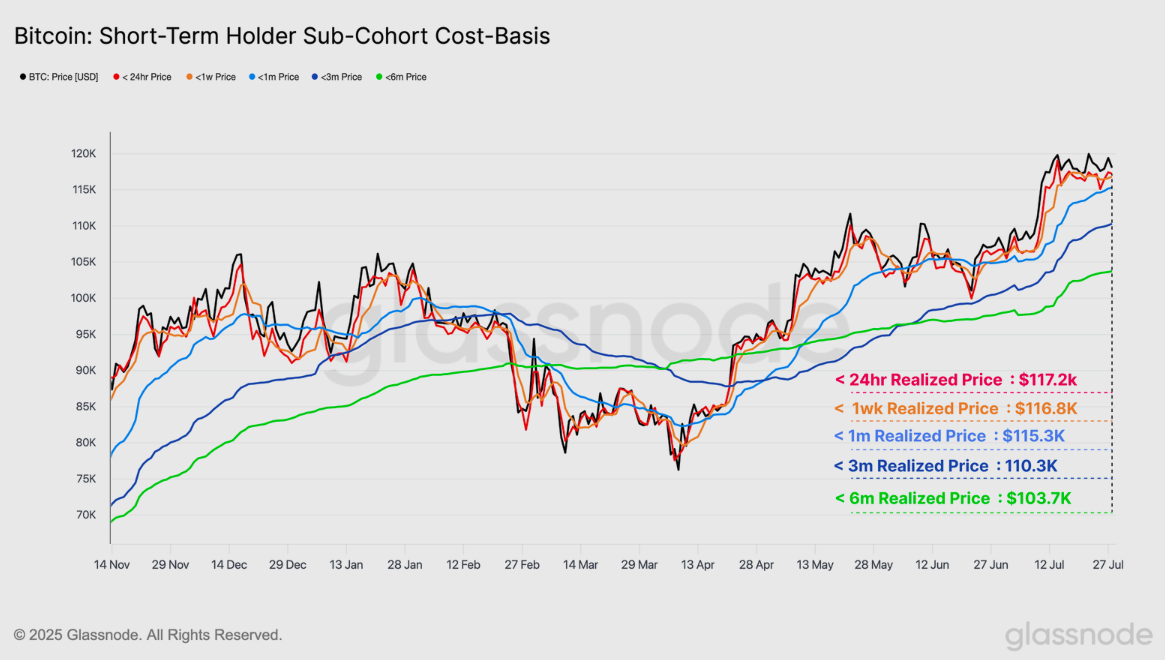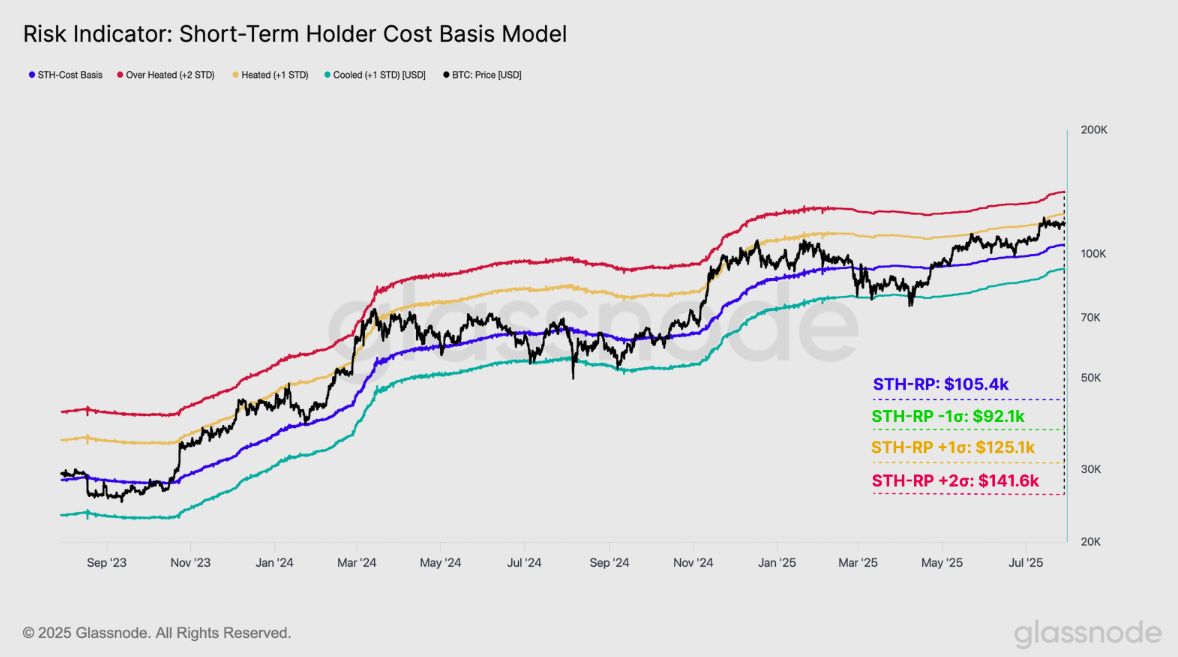Bitcoin short-term holders provide essential near-term BTC price support, but a gap between $110,000 and $115,000 suggests a potential price drop to $110,000 before any further rally.
-
Short-term holders (STHs) create key BTC support levels but leave a volume gap below current prices.
-
Glassnode research indicates BTC may revisit $110,000 to fill this gap before resuming upward momentum.
-
Profit-taking by STHs could limit BTC’s breakout potential to around $140,000.
Bitcoin short-term holders shape BTC price support with a possible drop to $110,000; learn key price levels and profit-taking impacts from Glassnode insights.
Glassnode Highlights BTC Cost Basis Gap Creating Price Gravity
Bitcoin’s short-term holders (STHs), defined as investors holding BTC for up to 155 days, play a pivotal role in establishing near-term price support. Glassnode’s latest analysis reveals a notable gap in the cost basis distribution between $110,000 and $115,000, where few coins have transacted. This “air-gap” creates a gravitational pull on BTC price, increasing the likelihood of a correction to around $110,000 to fill this void.
Why Does the Cost Basis Gap Matter for BTC Price Action?
The cost basis distribution reflects the aggregated purchase prices of investors, serving as a critical support indicator during bull markets. Glassnode notes that BTC’s rapid rise from $110,000 to $115,000 left little opportunity for accumulation in that range, resulting in a volume gap. This absence of support below current prices means the market may test $110,000 to confirm if buyers will step in, marking it as a key zone for traders to watch.

Bitcoin cost basis distribution heatmap (screenshot). Source: Glassnode
Short-Term Holder Profit-Taking Sets BTC Price Ceiling Near $140,000
Glassnode’s data further breaks down STH cohorts by purchase price, revealing potential resistance levels where profit-taking may occur. Using standard deviation analysis, the firm predicts that if BTC enters price discovery, the $140,000 region could act as a significant sell zone. This level corresponds to the +2σ band, where many STHs will likely realize gains, potentially capping BTC’s upside in the near term.
How Do STH Cohorts Influence Future BTC Price Targets?
Each STH cohort accumulates BTC at different price points, creating a layered support and resistance structure. As prices approach these levels, investors may sell to secure profits, influencing market momentum. Glassnode’s model suggests that while $110,000 acts as a support floor, $140,000 represents a probable ceiling due to concentrated profit-taking pressure.

Bitcoin STH cost basis by cohort (screenshot). Source: Glassnode

Bitcoin STH cost basis standard deviations (screenshot). Source: Glassnode
What Is the Outlook for Bitcoin Price Based on Short-Term Holder Behavior?
Bitcoin short-term holders strongly influence near-term price dynamics by providing support and setting resistance through profit-taking. The current cost basis gap between $110,000 and $115,000 suggests BTC may dip to $110,000 to “fill” this void before attempting higher levels. Meanwhile, $140,000 remains a critical resistance zone where selling pressure from STHs could intensify.
How Should Traders Use This Information?
Traders can monitor the $110,000 level as a key support test and watch for volume increases signaling buyer interest. Conversely, approaching $140,000 should prompt caution due to potential profit-taking. Understanding these cost basis dynamics offers a data-driven framework for anticipating BTC price movements.
Frequently Asked Questions
How do short-term holders affect Bitcoin’s price stability?
Short-term holders influence Bitcoin’s price by providing support at their average purchase prices. Their buying and selling decisions create key support and resistance levels that impact BTC’s price stability.
Will Bitcoin price fall to $110,000 soon?
Bitcoin may dip to $110,000 to fill a volume gap in investor cost basis, which acts as a price magnet. This correction would test if buyers are ready to support the price at that level.
Key Takeaways
- Short-term holders form critical BTC support: Their aggregated purchase prices create key price floors.
- Cost basis gap signals potential dip: The $110,000–$115,000 range lacks volume, increasing the chance of a price pullback.
- Profit-taking caps upside: Resistance near $140,000 may limit BTC’s breakout due to selling pressure from short-term investors.
Conclusion
Bitcoin’s short-term holders play a decisive role in near-term price movements by establishing support and resistance levels. Glassnode’s research highlights a likely test of the $110,000 support zone before BTC can challenge higher targets near $140,000. Monitoring these cost basis dynamics offers valuable insights for traders navigating the current market environment.
